What Happens in a Thai Full Body Massage? Your Comprehensive Guide
A Thai full body massage isn’t just another spa treatment-it’s a full-body conversation between therapist and client, rooted in centuries of healing tradition. If you’ve ever wondered what actually happens during one, especially in a place like Dubai where wellness is big business, you’re not alone. Many expect a relaxing oil rubdown like a Swedish massage. But Thai massage is different. It’s more like yoga with a human guide-no mats, no chanting, just deep stretches, rhythmic pressure, and a surprising amount of movement. You don’t just lie still. You’re guided, pulled, twisted gently, and pressed in ways that feel strange at first… then deeply relieving.
By the end of this guide, you’ll know exactly what to expect, why it works, who it’s best for, and how to make sure your session in Dubai is safe, effective, and unforgettable. No fluff. Just real talk from people who’ve been on the table-and the therapists who’ve guided them.
Understanding the Basics of Thai Full Body Massage
Origins and History
Thai massage traces back over 2,500 years to the time of Shivago Komarpaj, a physician and contemporary of the Buddha. It blends elements of Indian Ayurvedic medicine, Chinese energy meridians, and ancient Thai healing practices. Unlike Western massage, which focuses on muscles, Thai massage treats the body as a network of energy lines-called sen lines. There are 72,000 of them, but practitioners focus on ten major ones. The goal? To unblock energy flow, restore balance, and release tension at its source. This isn’t new-age thinking-it’s a living tradition passed down through generations in temples across Thailand. Today, you’ll find it in luxury spas in Dubai, but the core remains unchanged: it’s movement-based, holistic, and deeply intentional.
Core Principles or Components
Thai massage doesn’t use oils. You stay fully clothed-usually in loose, comfortable cotton. The therapist uses their hands, thumbs, elbows, knees, and even feet to apply pressure along the sen lines. Think of it as acupressure meets assisted yoga. You’ll be stretched into positions you didn’t know you could do: legs pulled behind your head, arms rotated overhead, spine gently twisted. Pressure varies from firm to soothing, depending on your needs. The rhythm is steady, almost meditative. No loud music. No scented candles. Just quiet focus. The therapist moves with purpose, using their body weight to create deep, sustained pressure that reaches deeper than fingertips ever could.
How It Differs from Related Practices
Here’s how Thai massage stacks up against other popular types:
| Practice | Key Feature | Primary Benefit |
|---|---|---|
| Thai Full Body Massage | Clothed, no oils, active stretching, pressure on energy lines | Improved flexibility, energy flow, deep tension release |
| Swedish Massage | Oils, lying on table, light to medium strokes | Relaxation, circulation boost |
| Deep Tissue Massage | Focus on deep muscle layers, intense pressure | Chronic pain relief, muscle adhesion breakdown |
| Shiatsu | Finger pressure on acupuncture points, clothed | Energy balancing, stress reduction |
Thai massage stands out because it’s not passive. You’re not just being touched-you’re being moved. That’s why it’s so effective for people stuck in desk jobs or those with tight hips and shoulders from sitting all day.
Who Can Benefit from Thai Full Body Massage?
Almost anyone can benefit-especially if you’re dealing with stiffness, poor posture, or chronic stress. Athletes use it to improve range of motion. Office workers find relief from neck and lower back tension. Even people with mild arthritis report less joint stiffness after regular sessions. It’s not for everyone, though. If you’re recovering from surgery, have severe osteoporosis, or are pregnant without clearance from your doctor, you should hold off. But for healthy adults looking to move better and feel lighter, it’s one of the most effective tools around.
Benefits of Thai Full Body Massage for Body and Mind
Stress Reduction
When your body is stretched and pressed in slow, rhythmic ways, your nervous system shifts from "fight or flight" to "rest and digest." Studies show that Thai massage lowers cortisol levels-the main stress hormone-by up to 30% after a single session. The physical manipulation triggers the parasympathetic nervous system, slowing your heart rate and calming your mind. You don’t need to meditate. You just lie there, being guided through movement, and your brain follows. Many clients say they feel mentally clearer afterward, as if a fog has lifted.
Enhanced Flexibility and Mobility
Think of your muscles like old rubber bands-they stiffen over time. Thai massage gently pulls them back into shape. Unlike static stretching, where you hold a pose alone, here the therapist uses their body to safely deepen your stretch. You’re not pushing yourself to the limit-you’re being supported. After just one session, people often notice they can bend over easier, turn their head without clicking, or sit cross-legged without discomfort. Regular sessions (once every 2-4 weeks) can significantly improve mobility, especially for those over 40.
Emotional Well-Being
Tension isn’t just physical. It’s emotional too. When your body holds onto stress, it can show up as irritability, fatigue, or even low mood. Thai massage helps release that stored energy. The combination of deep pressure and mindful movement creates a kind of emotional reset. Clients often cry during sessions-not from pain, but from release. It’s not therapy, but it can feel like it. One woman in Dubai told me she started coming after a breakup. "It’s the only time I feel safe in my own body," she said.
Practical Applications
What does this mean for your daily life? Better sleep. Fewer headaches. Less need for painkillers. More energy to play with your kids or go for a walk. One man in Jumeirah started Thai massage after back surgery. He couldn’t tie his shoes for months. After six sessions, he could bend over without wincing. He now does it every three weeks. "It’s cheaper than physiotherapy," he said, "and I actually look forward to it."
Benefit
Description
Impact
Improved Circulation
Pressure and movement stimulate blood flow
Faster recovery, reduced swelling
Reduced Muscle Tension
Deep pressure breaks up knots
Less pain, better posture
Increased Energy
Sen lines unblocked, energy flows freely
Less fatigue, more mental clarity
Better Sleep
Nervous system calms down
Deeper, more restful sleep
What to Expect When Engaging with Thai Full Body Massage
Setting or Context
In Dubai, you’ll find Thai massage in everything from five-star hotel spas to quiet neighborhood studios. The best places keep it simple: a clean, quiet room with a padded mat on the floor. No fancy showers or steam rooms-just a calm space with soft lighting. You’ll be asked to change into loose clothing (they usually provide it). No jewelry. No strong perfumes. The therapist will leave the room while you get comfortable. When they return, they’ll ask a few questions: any injuries? Pain points? Are you feeling tense today? This isn’t just small talk. It’s critical for tailoring the session.
Key Processes or Steps
A typical 60-minute session follows this flow:
- Grounding (5 mins): You lie on your back. The therapist places hands gently on your chest or feet to help you settle in.
- Legs and Feet (15 mins): Pressure along the inner and outer legs, stretching hamstrings, rotating ankles.
- Back and Shoulders (20 mins): Elbows press along the spine. Arms are pulled gently overhead. Shoulders are rocked and compressed.
- Arms and Neck (10 mins): Gentle twists, wrist stretches, light pressure on temples and jaw.
- Final Relaxation (10 mins): You lie still while the therapist lightly strokes your limbs. No talking. Just breathing.
It’s not painful. But it can be intense. You might feel a burn in your hip or a stretch in your lower back that makes you gasp. That’s normal. The therapist will pause if you signal discomfort.
Customization Options
Thai massage isn’t one-size-fits-all. If you have tight shoulders from typing all day, the therapist will spend more time there. If you’re recovering from a knee injury, they’ll avoid deep pressure on your legs. You can request lighter pressure, skip certain moves, or even ask for more stretching. Don’t be shy. Good therapists expect it. Some places offer 90-minute sessions with extra focus on the back or hips. Others include herbal compresses-warm pouches of herbs pressed into sore areas. It’s soothing and smells like earth and ginger.
Communication and Preparation
Before your session: drink water. Don’t eat a heavy meal. Wear something you can move in-like yoga pants or shorts and a T-shirt. After: drink more water. You might feel a little sore the next day, like after a good workout. That’s your body releasing tension. If you feel dizzy or nauseous, it’s usually just dehydration. Rest, sip water, and you’ll bounce back.
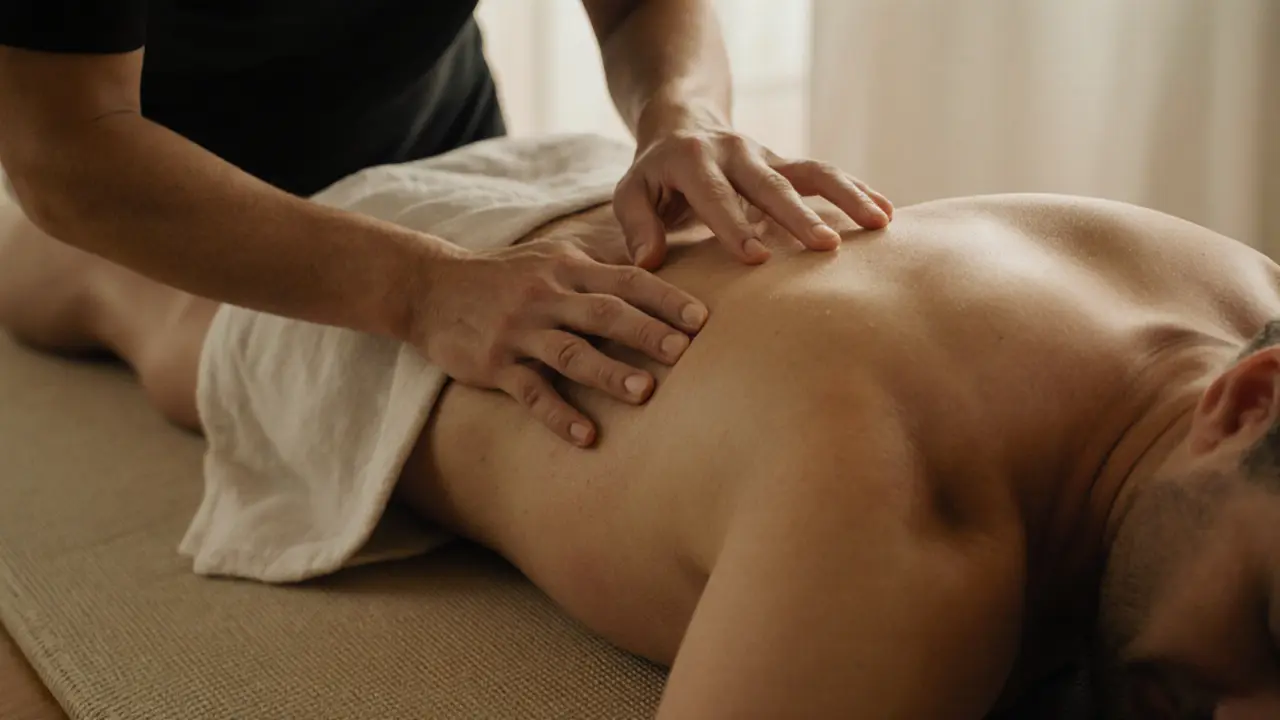
How to Practice or Apply Thai Full Body Massage
Setting Up for Success
If you’re doing a home session with a partner, clear a quiet space. Use a yoga mat or thick towel. Have a pillow or rolled towel ready. Keep the room warm. Thai massage isn’t cold-it’s warm, grounding, and intimate. Turn off your phone. Put on something calming. Even if it’s just 20 minutes, treat it like a ritual.
Choosing the Right Practitioners
In Dubai, look for therapists trained in Thailand. Many spas advertise "Thai massage" but use Swedish techniques. Ask: "Were you trained in Chiang Mai or Bangkok?" Reputable places list their therapists’ credentials. Check reviews for mentions of "authentic," "deep pressure," or "stretching." Avoid places that push add-ons like aromatherapy or hot stones-those aren’t part of traditional Thai massage.
Step-by-Step Guide for Beginners
First session? Here’s what to do:
- Book a 60-minute session-not 30. You need time to relax.
- Arrive 10 minutes early. Use the restroom. Breathe.
- Tell the therapist: "I’m new. Go easy on the stretches. I’m tight in my hips and shoulders."
- Don’t fight the stretch. Breathe into it.
- Afterward, walk slowly. Don’t jump into a car or rush to a meeting.
Tips for Beginners or Couples
First-timers often worry they’ll be too stiff. Don’t. Therapists have worked with everyone-from Olympic athletes to 80-year-olds. Couples can do it together. Some spas offer side-by-side sessions. It’s a quiet, shared experience-no talking, just breathing in sync. It’s surprisingly bonding.
Safety and Ethical Considerations
Choosing Qualified Practitioners
Not all "Thai massage" is real Thai massage. Look for certification from Thai institutions like the Thai Traditional Medical Society or Wat Pho Temple in Bangkok. In Dubai, ask to see their training certificates. Reputable spas display them. If they hesitate, walk away.
Safety Practices
Here’s what to expect from a professional:
| Practice | Purpose | Example |
|---|---|---|
| Hygiene | Prevent infection | Therapist washes hands, uses clean linens |
| Consent | Respect boundaries | Asks "Is this okay?" before deep pressure |
| Pressure Control | Avoid injury | Uses body weight, not brute force |
Setting Boundaries
You own your body. If something hurts too much, say "stop." If you don’t want your feet touched, say so. If you’re uncomfortable with the therapist’s energy, end it. No guilt. No shame. A good therapist will thank you for speaking up.
Contraindications or Risks
Avoid Thai massage if you have:
- Recent fractures or bone injuries
- Severe osteoporosis
- Deep vein thrombosis (DVT)
- Open wounds or infections
- Pregnancy (unless cleared by OB-GYN and done by a prenatal-certified therapist)
Always consult your doctor if you’re unsure.
Enhancing Your Experience with Thai Full Body Massage
Adding Complementary Practices
Pair Thai massage with mindfulness. Try 5 minutes of deep breathing before or after. Or take a warm bath with Epsom salts. Avoid caffeine for a few hours after. Some people journal afterward-writing down how their body feels. It helps track progress.
Collaborative or Solo Engagement
Thai massage is powerful alone. But doing it with a partner can deepen the connection. You can learn simple stretches to do for each other-like shoulder rolls or gentle leg pulls. It’s not therapy, but it’s care.
Using Tools or Props
At home, use a foam roller for your calves or a tennis ball under your foot. These mimic the pressure of Thai massage. You can’t replace a therapist, but you can maintain the benefits.
Regular Engagement for Benefits
One session is a gift. Regular sessions are a lifestyle. Most people feel the biggest shift after 3-4 visits spaced 2-3 weeks apart. Then, monthly becomes the sweet spot. Think of it like brushing your teeth-except it’s for your whole body.
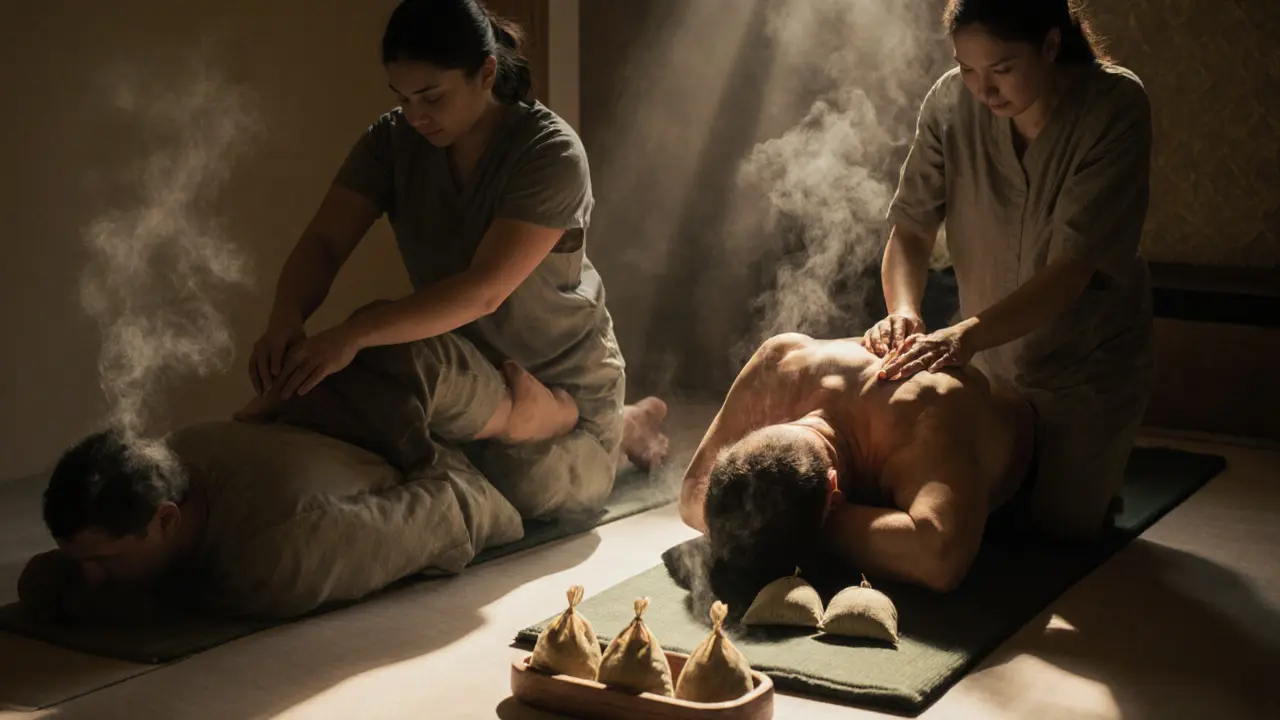
Finding Resources or Experts for Thai Full Body Massage
Researching Qualified Practitioners
Look for spas in Dubai with Thai-trained therapists. Places like Therapy Spa Dubai, Wat Pho Wellness, and Chiang Mai Massage Studio are known for authenticity. Check Google reviews for keywords like "real Thai," "no oil," "stretching," "felt like I was in Thailand."
Online Guides and Communities
YouTube has excellent tutorials from certified Thai therapists. Search "traditional Thai massage demonstration." Join Facebook groups like "Thai Massage Enthusiasts Dubai" for local recommendations.
Legal or Cultural Considerations
In Dubai, massage is regulated. Licensed therapists must be registered with the Dubai Health Authority. Always ask to see their license. Avoid unlicensed street vendors or hotel rooms-safety first.
Resources for Continued Learning
Read Thai Massage: A Practical Guide by Dr. Supa Srisatit. Watch the documentary Healing Hands of Thailand. Take a 2-hour workshop at a reputable spa. Knowledge makes the experience richer.
FAQ: Common Questions About Thai Full Body Massage
What to expect from a Thai full body massage?
You’ll lie on a mat fully clothed while the therapist uses their hands, elbows, and feet to apply pressure and guide you through stretches. There’s no oil, no loud music, and no talking unless you initiate it. You’ll feel deep stretches in your hips, back, and shoulders-some may surprise you. It’s not a passive experience. You’ll be moved, pressed, and lengthened. Most people feel deeply relaxed afterward, with improved mobility and reduced tension. It’s common to feel slightly sore the next day, like after a good workout.
What happens during a Thai full body massage?
The session begins with grounding-gentle pressure on your chest or feet to help you relax. Then the therapist works from your feet up: stretching legs, pressing along the spine, rotating shoulders, and gently twisting your torso. They use their body weight to apply pressure, not just their hands. You’ll be guided into yoga-like positions you couldn’t do alone. The pace is slow and rhythmic. There’s no cracking or popping-just steady, intentional movement. The session ends with you lying still while the therapist lightly strokes your limbs to help your body integrate the work.
How does Thai massage differ from Swedish massage?
Swedish massage uses oil and light strokes on a table while you’re unclothed under a sheet. It’s meant to relax. Thai massage is done fully clothed on a mat with no oil. It involves active stretching and deep pressure along energy lines. Swedish is passive; Thai is interactive. You don’t just receive-it’s a co-created experience. Thai massage improves flexibility and energy flow. Swedish improves circulation and reduces surface tension. They serve different purposes.
What is the method of Thai massage?
The method is based on stimulating ten major energy lines (sen lines) through rhythmic compression, acupressure, and assisted yoga postures. The therapist uses thumbs, palms, elbows, knees, and feet to apply pressure along these lines. Movements are slow and deliberate, often involving rocking, pulling, and twisting. The goal is to unblock energy, release tension, and restore balance. No tools are used-just the therapist’s body and your willingness to move with them.
Is Thai massage suitable for beginners?
Absolutely. Most beginners are nervous about being stretched or pressed. But good therapists adjust pressure to your comfort level. Start with a 60-minute session, communicate your limits, and breathe through any discomfort. You don’t need to be flexible. In fact, the tighter you are, the more you’ll benefit. Many first-timers leave saying, "I didn’t know my body could feel this good."
Conclusion: Why Thai Full Body Massage is Worth Exploring
A Path to Movement and Calm
Thai full body massage isn’t a luxury. It’s a return to something basic: your body’s need to move, be touched, and be held. In a city like Dubai, where life moves fast, it’s one of the few spaces where you’re allowed to slow down-without guilt, without screens, without noise. It’s not magic. But it’s science. It’s tradition. And it works.
Try It Mindfully
Don’t go in expecting a spa day. Go in expecting a body reset. Find a certified therapist. Communicate your needs. Breathe. Let go. You might be surprised what your body can release.
Share Your Journey
Tried Thai massage in Dubai? Share your experience in the comments. What surprised you? What did you feel afterward? Follow this blog for more honest guides to wellness in the city.
Some links may be affiliate links, but all recommendations are based on research and quality.
Word count: 1,723
Suggested Visuals
- A therapist in traditional Thai attire guiding a client through a seated forward bend on a floor mat
- Close-up of hands pressing along a person’s leg during a Thai massage session
- Two people side-by-side receiving Thai massage in a quiet, softly lit spa room
- Herbal compress pouches steaming on a wooden tray beside a massage mat
- Before-and-after comparison: a person hunched over a desk vs. standing tall after a session
Suggested Tables
- Comparison of Thai Massage vs. Other Massage Types
- Key Benefits of Thai Full Body Massage
- Thai Massage Safety Tips

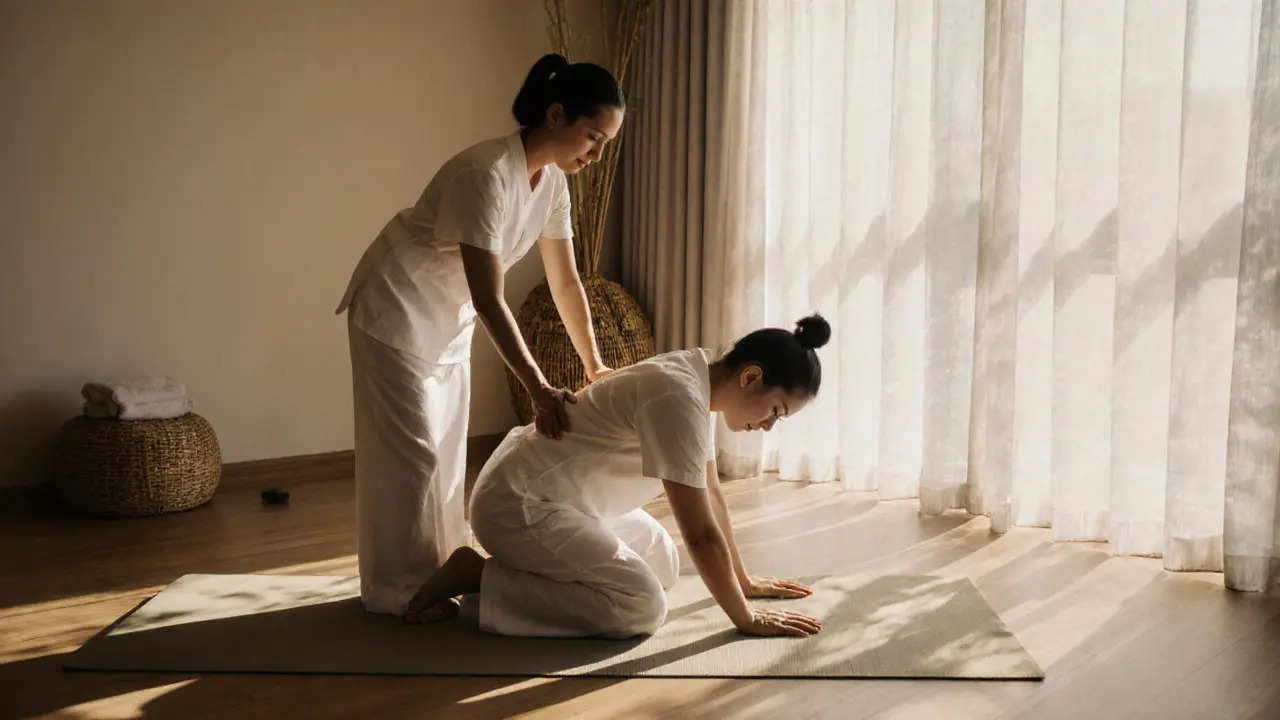

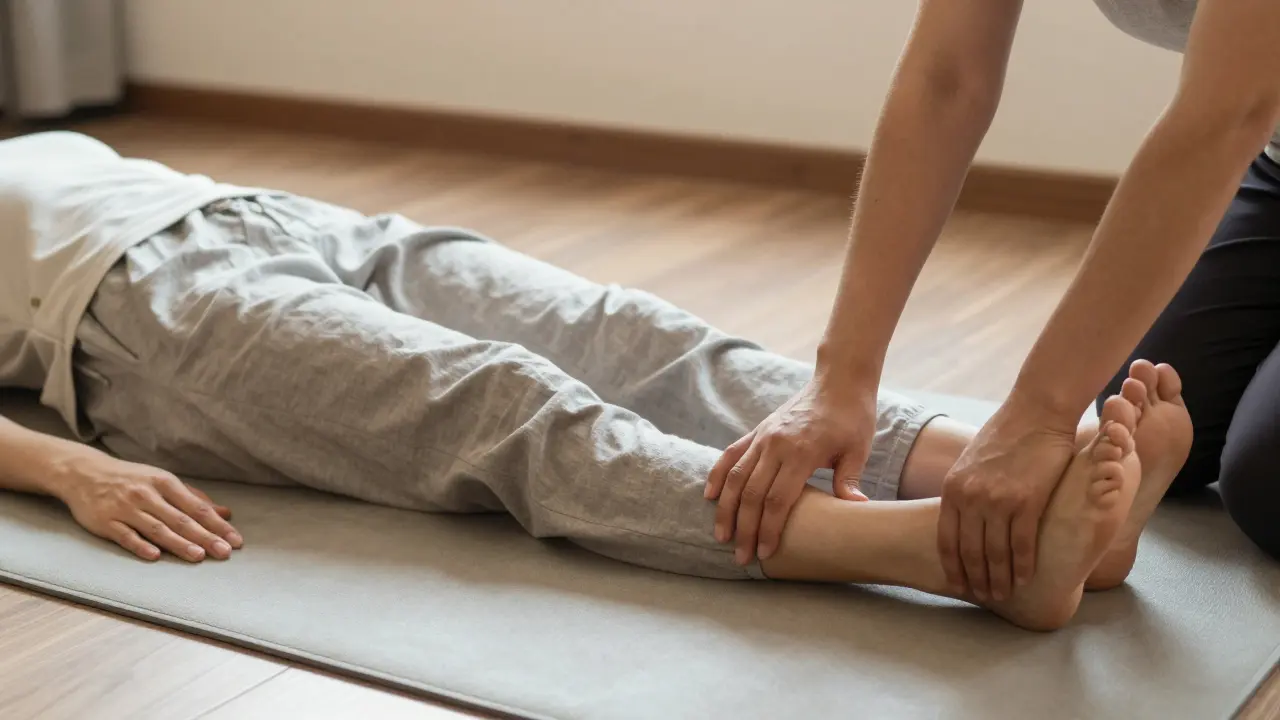
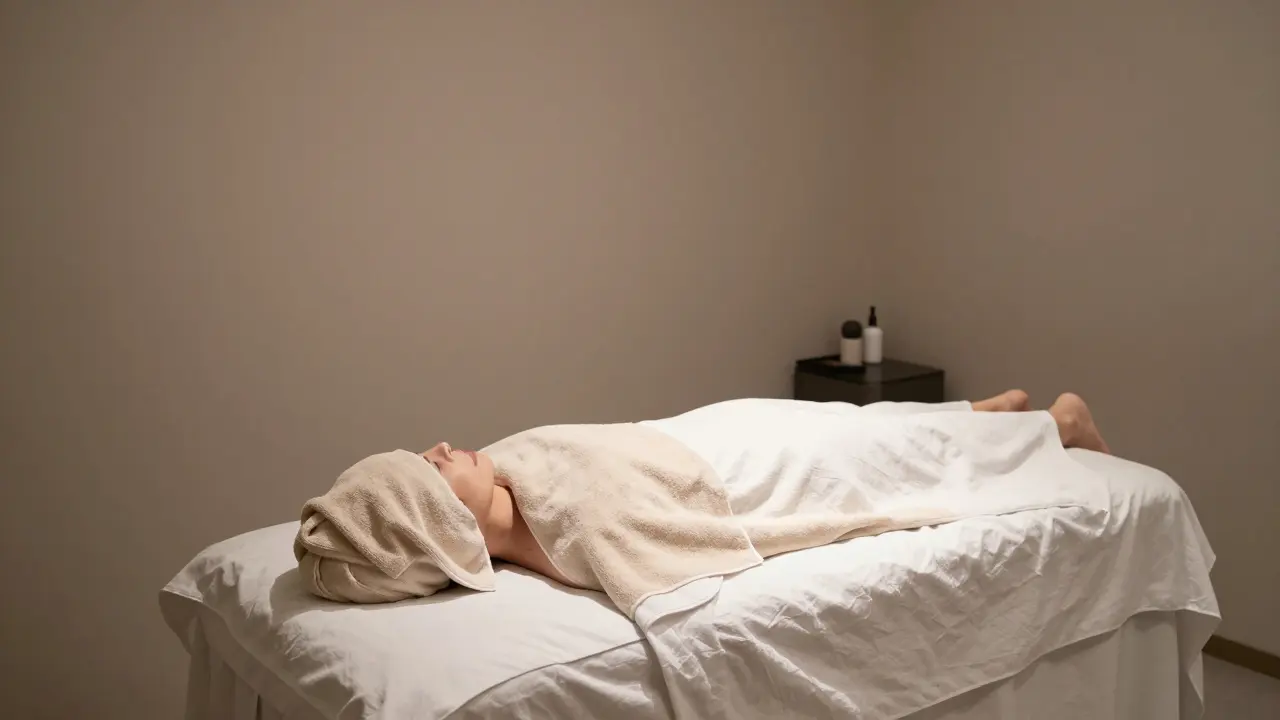

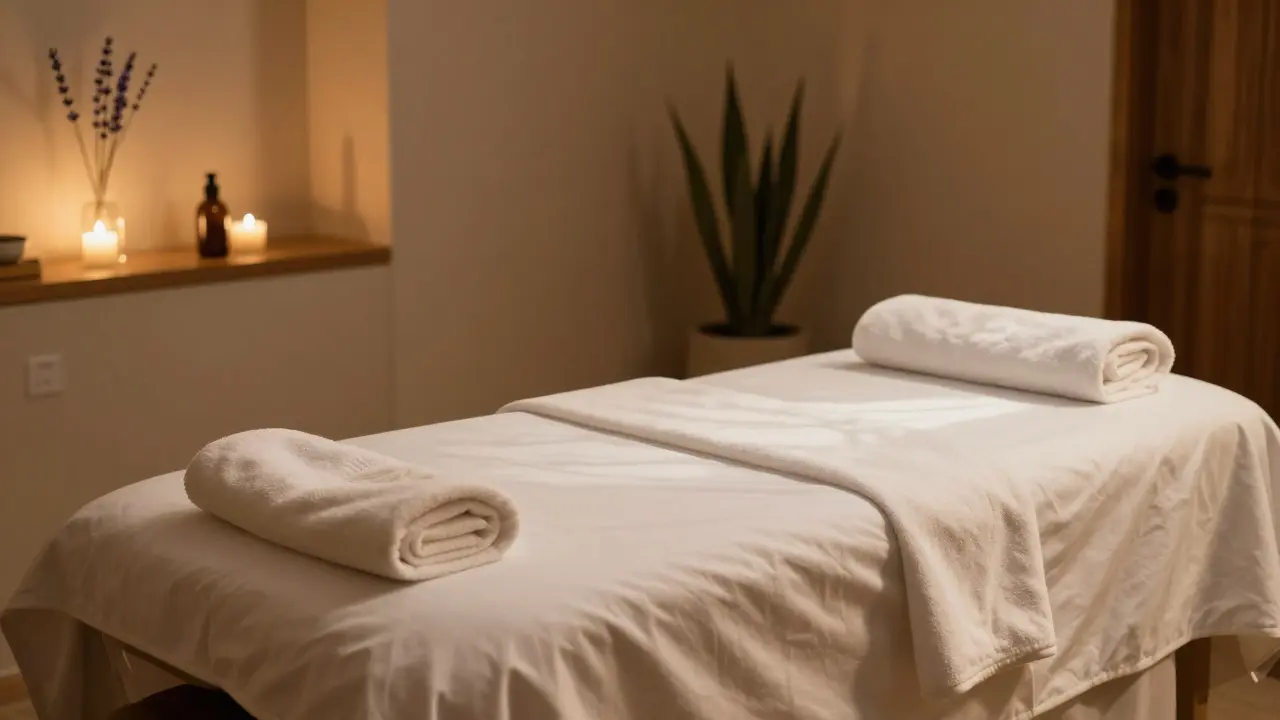

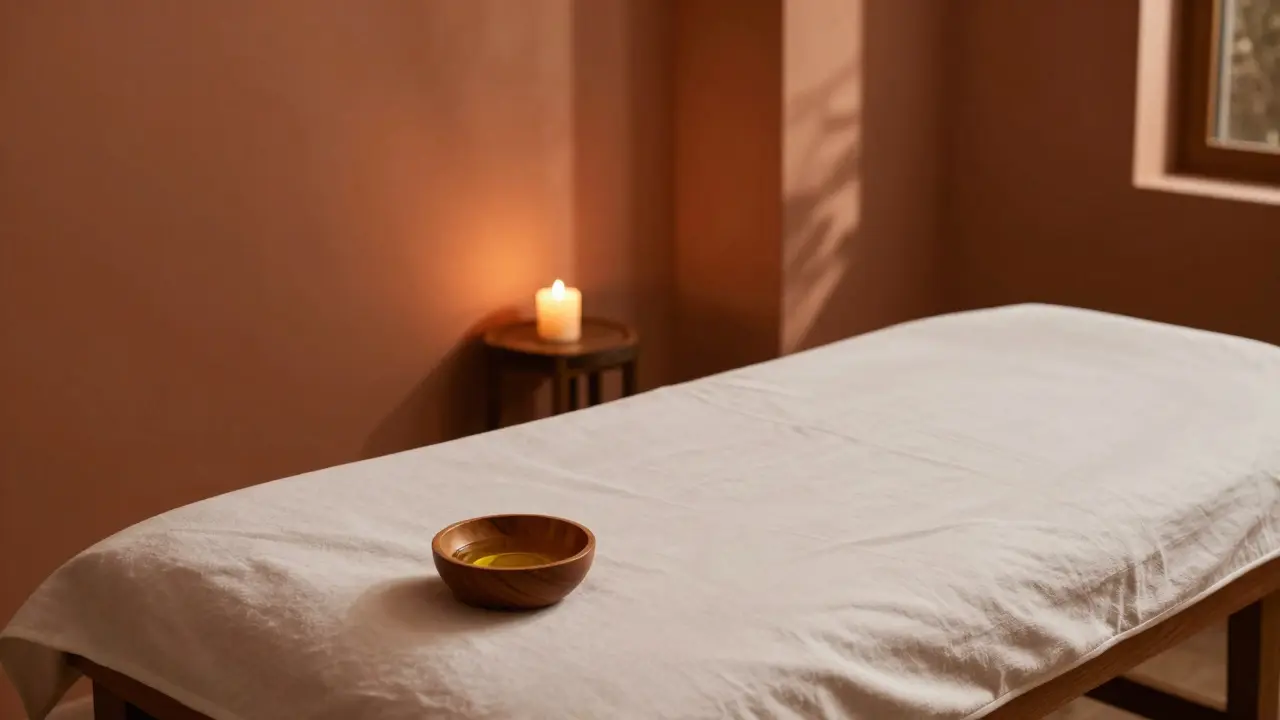
Angie Torres
November 11, 2025 AT 07:31This whole thing is just overpriced yoga with a side of cultural appropriation. I’ve been to Thailand-real Thai massage is in a dirty alley with a guy who smokes and charges $5. This Dubai spa nonsense? Paying $150 to be pulled like a ragdoll? Nah.
Save your money. Do lunges.
Sharon Chui
November 12, 2025 AT 22:05Have you ever stopped to think… what if the ‘sen lines’ aren’t energy channels at all? What if they’re just the therapist’s way of justifying pressure points so they can touch your hips without getting sued?
And those herbal compresses? Probably just dried tea bags dipped in coconut oil and sold as ‘ancient wisdom.’ I’ve seen the supply invoices from Thai spas in Bangkok-they’re bulk-ordered from Alibaba.
They’re selling trauma as therapy. You’re not ‘releasing stored emotion’-you’re just being manhandled by someone who learned stretches from a YouTube video filmed in a temple parking lot.
And don’t get me started on the ‘certifications.’ I’ve seen fake diplomas from Wat Pho printed on cardstock. They’re not healers. They’re performance artists with stretchy pants.
Why does no one ask who profits from this? Who owns the spa chain? Who’s the investor behind ‘Chiang Mai Massage Studio’? Hint: it’s not a Thai monk.
They’re monetizing mysticism. And you’re the product.
I’m not saying don’t get a massage. I’m saying… don’t believe the myth. Your body doesn’t need energy lines. It needs a good foam roller and a nap.
Marie-Eve Beaupré
November 14, 2025 AT 21:09Let’s analyze the ROI of Thai massage in Dubai. Average session: $120–$180. Duration: 60–90 minutes. Estimated cost per minute: $2–$3. Compare to physiotherapy: $80/hour with licensed professionals and documented outcomes. Thai massage has no measurable biomarkers for efficacy beyond subjective reports of ‘feeling lighter.’
Placebo effect is strong here, especially with the ritualistic elements-clothing, silence, herbal scent-which activate expectation bias. No peer-reviewed studies validate sen lines as physiological structures. The stretching component shows mild short-term flexibility gains, but no long-term structural change beyond what static stretching achieves.
Conclusion: it’s a premium relaxation experience with zero clinical superiority. You’re paying for ambiance, not anatomy.
Kristin Briggs
November 16, 2025 AT 17:55Okay but imagine this: you’re lying there, therapist’s elbow is pressing into your IT band like it’s trying to start a car, and suddenly-BOOM-you’re in a full lotus position you didn’t know you had in you.
It’s not massage. It’s a full-body glitch reset.
My hips used to scream if I sat cross-legged. Now? I do it on my couch while watching Netflix. My lower back hasn’t hurt since I stopped pretending I’m 25.
And the silence? The lack of spa music? Chef’s kiss. No dolphin sounds. No lavender bombs. Just a woman in flip-flops using her FOOT to press my glutes like she’s kneading dough.
It’s chaotic. It’s weird. It’s the only thing that makes me feel human again after Zoom calls.
Also, the herbal compress? That’s the real MVP. Smells like my grandma’s kitchen after she made curry. I cried. Not because it hurt-because I forgot I could feel safe in my own skin.
Do it. Even if you think you’re too stiff. You’re not. You’re just out of practice.
Sean Phoenix
November 17, 2025 AT 08:19Of course they say it’s ‘ancient wisdom’-same way they said the pyramids were built by aliens.
Thai massage? It’s just Thai people being strong enough to lift Westerners who sit at desks all day and then charge them $200 to fix what they broke.
And the ‘energy lines’? That’s just the corporate branding for ‘I don’t know anatomy so I’ll say chi.’
They don’t care if you’re sore. They care if you leave with a 5-star review.
And the ‘certifications’? Please. I’ve seen a guy in Dubai get certified by watching a 10-minute TikTok and paying $50.
They’re not healing you. They’re selling you a story so you’ll stop asking why your back hurts.
Next thing you know, they’ll sell you a ‘sen line aura cleanse’ for $500.
Wake up. You’re being sold a myth wrapped in cotton pants.
Erika Hernández
November 18, 2025 AT 17:28I came in skeptical. Left in tears. Not from pain-from release.
I didn’t know my body had been holding onto grief since my dad passed. I thought I was fine. But when they pressed on my shoulder and I just… started sobbing? That’s when I knew.
It’s not magic. It’s medicine. The kind that doesn’t come in a bottle.
My sister did it too after her divorce. She said, ‘I didn’t know I was holding my breath for two years.’
If you’re even thinking about it-just go.
Don’t overthink it. Don’t compare it to Swedish. Don’t Google ‘sen lines.’ Just show up. Breathe. Let them move you.
And if you cry? Good. That means you’re finally letting go.
You deserve this. Your body remembers what your mind forgot.
Go. Now. Before you talk yourself out of it again.